| Product Name | Alpha Synuclein Protein | |||||||||||||||||||||||||||||||||||||||||||||||||||||||||||||||||||||||||||||||||||||||||||||||||||||||||||||||||||||
| Description |
Mouse Recombinant Alpha Synuclein Pre-formed Fibrils (Type 1) |
|||||||||||||||||||||||||||||||||||||||||||||||||||||||||||||||||||||||||||||||||||||||||||||||||||||||||||||||||||||
| Applications | WB, SDS-PAGE, In vivo assay, In vitro assay | |||||||||||||||||||||||||||||||||||||||||||||||||||||||||||||||||||||||||||||||||||||||||||||||||||||||||||||||||||||
| Concentration | 2 mg/ml or 5 mg/ml | |||||||||||||||||||||||||||||||||||||||||||||||||||||||||||||||||||||||||||||||||||||||||||||||||||||||||||||||||||||
| Conjugates |
No tag
StreptavidinProperties:
Biotin
|
|||||||||||||||||||||||||||||||||||||||||||||||||||||||||||||||||||||||||||||||||||||||||||||||||||||||||||||||||||||
| R-PE (R-Phycoerythrin) | ||
| Overview: |  |
Optical Properties:
λex = 565 nm λem = 575 nm εmax = 2.0×106 Φf = 0.84 Brightness = 1.68 x 103 Laser = 488 to 561 nm Filter set = TRITC |
Properties
| Storage Buffer | PBS pH 7.4 |
| Storage Temperature | -80ºC |
| Shipping Temperature | Dry Ice. Shipping note: Product will be shipped separately from other products purchased in the same order. |
| Purification | Ion-exchange Purified |
| Cite This Product | Mouse Recombinant Alpha Synuclein Protein (StressMarq Biosciences Inc., Victoria BC CANADA, Catalog # SPR-324) |
| Certificate of Analysis | Certified >95% pure using SDS-PAGE analysis. Low endotoxin <5 EU/mL @ 2mg/mL. |
| Other Relevant Information | For best results, sonicate immediately prior to use. Refer to the Neurodegenerative Protein Handling Instructions on our website, or the product datasheet for further information. Monomer source is catalog# SPR-323. |
Biological Description
| Alternative Names | Alpha synuclein PFFs, Alpha synuclein PFF, Alpha synuclein aggregates, Alpha synuclein protein aggregates, Alpha synuclein aggregates, Alpha-synuclein protein, Non-A beta component of AD amyloid protein, Non-A4 component of amyloid precursor protein, NACP protein, SNCA protein, NACP protein, PARK1 protein, SYN protein, Parkinson's disease familial 1 Protein |
| Research Areas | Alzheimer's Disease, Neurodegeneration, Neuroscience, Parkinson's Disease, Synuclein, Tangles & Tau, Multiple System Atrophy |
| Cellular Localization | Cytoplasm, Membrane, Nucleus |
| Accession Number | NP_001035916.1 |
| Gene ID | 20617 |
| Swiss Prot | O55042 |
| Scientific Background | Alpha-Synuclein (SNCA) is expressed predominantly in the brain, where it is concentrated in presynaptic nerve terminals (1). Alpha-synuclein is highly expressed in the mitochondria of the olfactory bulb, hippocampus, striatum and thalamus (2). Functionally, it has been shown to significantly interact with tubulin (3), and may serve as a potential microtubule-associated protein. It has also been found to be essential for normal development of the cognitive functions; inactivation may lead to impaired spatial learning and working memory (4). SNCA fibrillar aggregates represent the major non A-beta component of Alzheimers disease amyloid plaque, and a major component of Lewy body inclusions, and Parkinson's disease. Parkinson's disease (PD) is a common neurodegenerative disorder characterized by the progressive accumulation in selected neurons of protein inclusions containing alpha-synuclein and ubiquitin (5, 6). |
| References |
1. “Genetics Home Reference: SNCA”. US National Library of Medicine. (2013). 2. Zhang L., et al. (2008) Brain Res. 1244: 40-52. 3. Alim M.A., et al. (2002) J Biol Chem. 277(3): 2112-2117. 4. Kokhan V.S., Afanasyeva M.A., Van'kin G. (2012) Behav. Brain. Res. 231(1): 226-230. 5. Spillantini M.G., et al. (1997) Nature. 388(6645): 839-840. 6. Mezey E., et al. (1998) Nat Med. 4(7): 755-757. |
Product Images
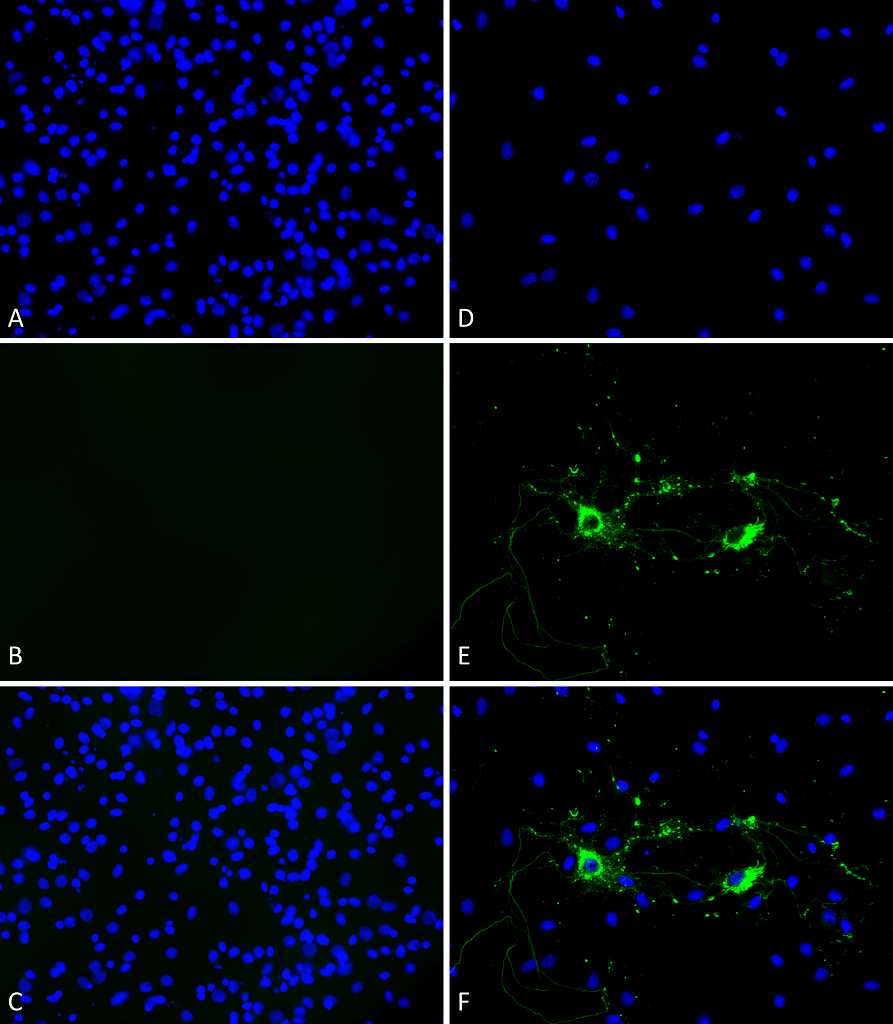
Primary rat hippocampal neurons show lewy body inclusion formation and loss of cells when treated with Type 1 mouse Alpha Synuclein Protein Pre-formed Fibrils (SPR-324) at 4 µg/ml (D-F) on DVI2, but not when treated with a control (A-C). Tissue: Primary hippocampal neurons. Species: Sprague-Dawley rat. Fixation: 3% formaldehyde from PFA for 20 min. Blocker: 1:1 PBS:LiCOR Odyssey Block (LiCOR, 927-40010) and 30 mL/mL of 0.1% triton-X 100 for 30 min. Primary Antibody: Mouse anti-pSer129 Antibody (1:1000) and Rabbit anti-pSer129 (1:800) for 24 hours at 4°C. Secondary Antibody: ATTO 546 Donkey Anti-Mouse (1:700) and ATTO 488 Donkey Anti-Rabbit (1:700) for 1 hour at RT (composite green). Counterstain: Hoechst (blue) nuclear stain at 1:3000 for 1 hour at RT. Localization: Lewy body inclusions. Magnification: 20x.
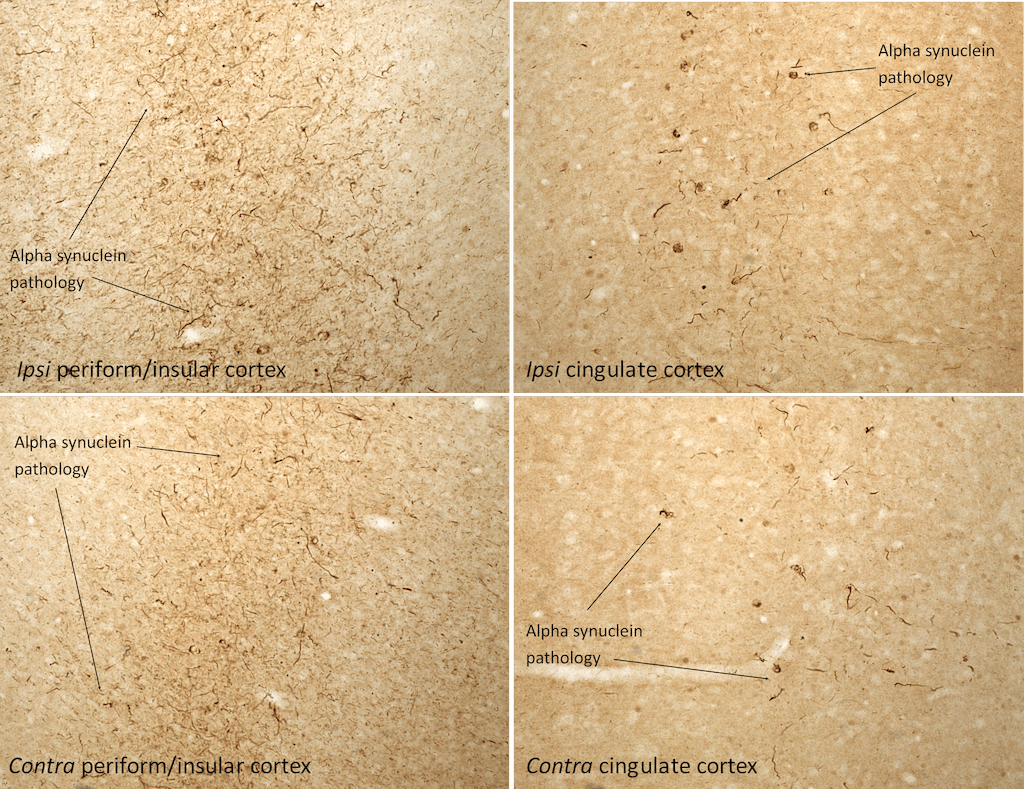
Immunohistochemistry analysis of rat brain injected with Type 1 mouse alpha synuclein PFFs (SPR-324). Species: Female Sprague-Dawley Rat. Rat was injected with 16µg Type 1 mouse alpha synuclein PFFs (SPR-324) in each of 2 injection sites: AP+1.6, ML+2.4, DV-4.2 from skull; and AP-1.4, ML+0.2, DV-2.8 from skull. 30 days post-injection. Fixation: Saline perfusion followed by 4% PFA fixation for 48 hrs. Primary antibody: rabbit monoclonal anti-pSer129 alpha synuclein. Secondary Antibody: Biotin-SP Donkey Anti-Rabbit IgG (H+L) at 1:500 for 2 hours in cold room with shaking. ABC signal amplification, DAB staining. Magnification: 20X. Alpha synuclein pathology is seen in the periform/insular cortex and the cingulate cortex on both the same (ipsi) and opposite (contra) sides as the injection sites.
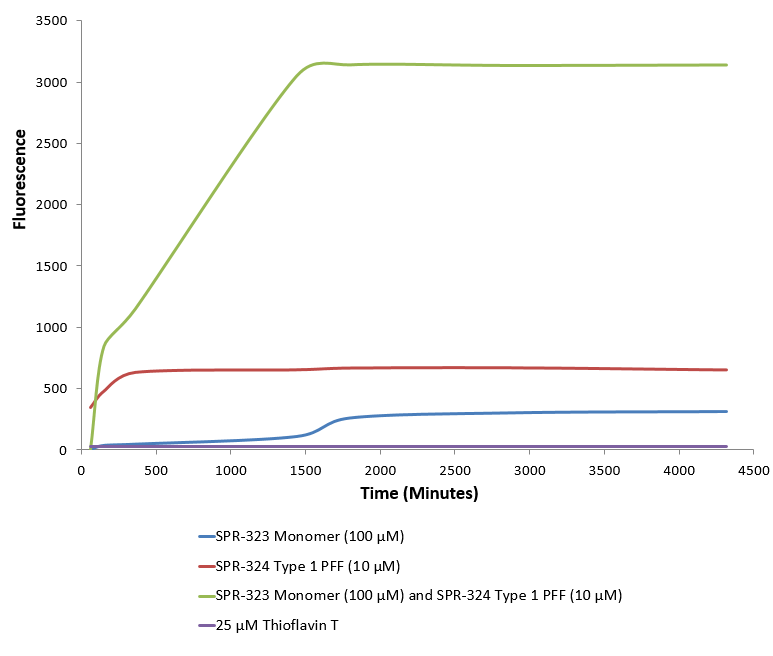
Type 1 alpha synuclein Pre-formed Fibrils (SPR-324) seed the formation of new alpha synuclein fibrils from the pool of alpha synuclein monomers (SPR-323). Thioflavin T is a fluorescent dye that binds to beta sheet-rich structures, such as those in alpha synuclein fibrils. Upon binding, the emission spectrum of the dye experiences a red-shift, and increased fluorescence intensity. Thioflavin T emission curves show increased fluorescence (correlated to alpha synuclein protein aggregation) over time when 10 µM of Type 1 alpha synuclein Pre-formed Fibrils (SPR-324) is combined with 100 µM of alpha synuclein monomer (SPR-323), as compared to Type 1 alpha synuclein Pre-formed Fibrils (SPR-324) or alpha Synuclein monomer (SPR-323) alone. Thioflavin T ex = 450 nm, em = 485 nm.
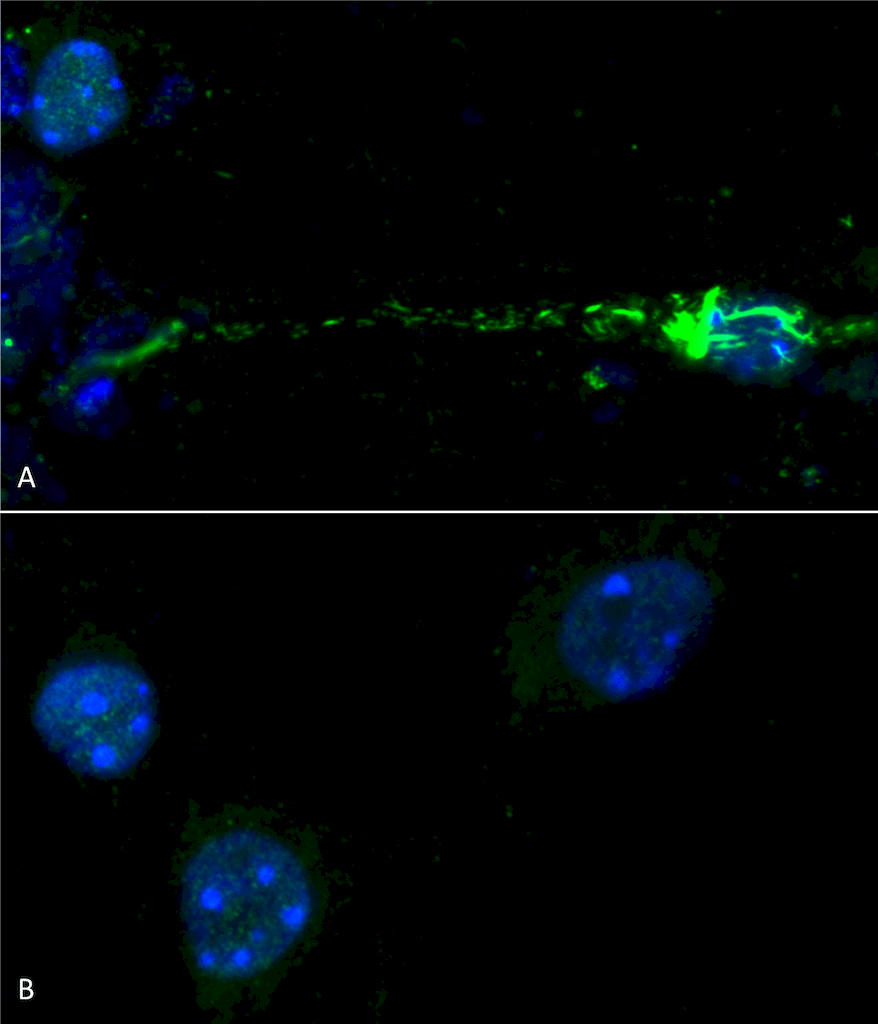
Primary mouse hippocampal neurons treated with 100 nM sonicated mouse alpha synuclein PFFs (SPR-324) (A). Phosphorylated alpha synuclein (detected with pSer129 antibody SPC-742) was visible in perinucleus and neurites compared to untreated control (B). Read the protocol at pabmabs.com/?p=7901. Image courtesy of Trine Rasmussen, Simon Molgaard Jensen at Aarhus University.
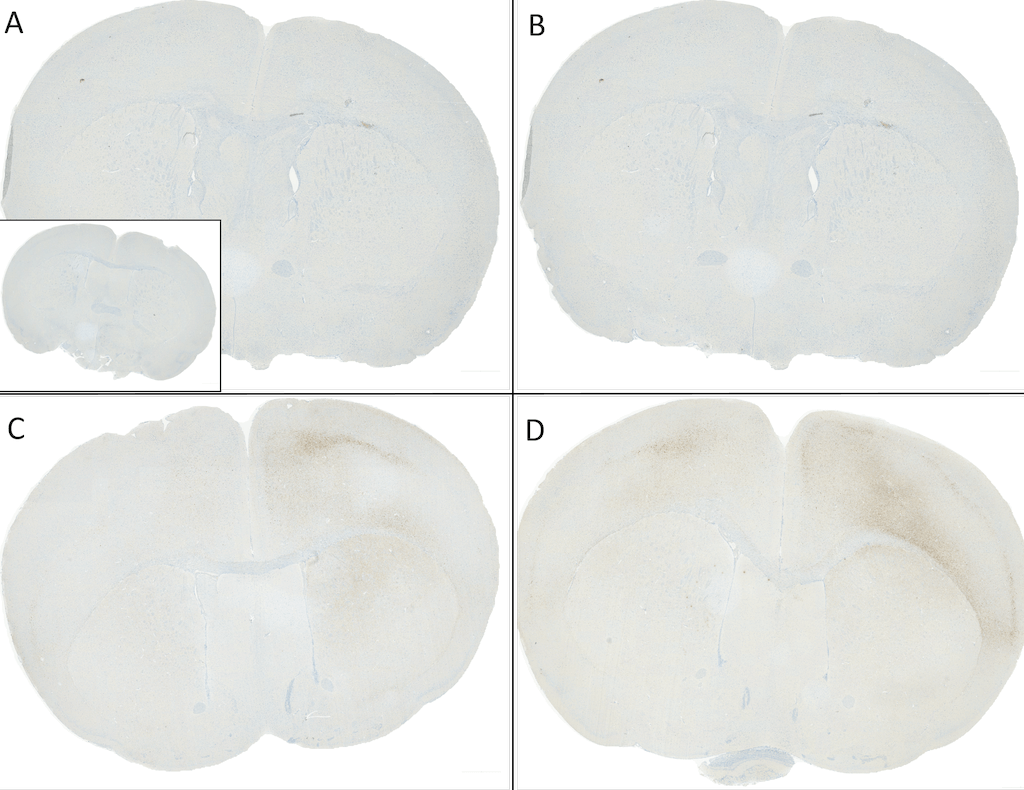
C57/BL6 mice were injected with sonicated recombinant mouse alpha synuclein monomers or fibrils at 8 weeks of age. Mice were unilaterally injected in the dorsal striatum (bregma AP + 0.2 mm, L +/1 2.0 mm, V – 3.0 mm) and sacrificed 30 days post-injection. (A) 1.25 uL mouse alpha synuclein monomers (SPR-323). (B) 2.5 uL mouse alpha synuclein monomers (SPR-323). (C) 2.5 ug alpha synuclein PFFs (SPR-324). (D) 5 ug alpha synuclein PFFs (SPR-324) Inset: PBS (negative control). Primary antibody: Anti-Alpha Synuclein pSer129 (SMC-600) at 1:10 000. Secondary antibody: anti-rabbit HRP. Mice injected with PFF displayed alpha synuclein staining in the striatum and cortex and contralateral to the injection site. Courtesy of: Porsolt.
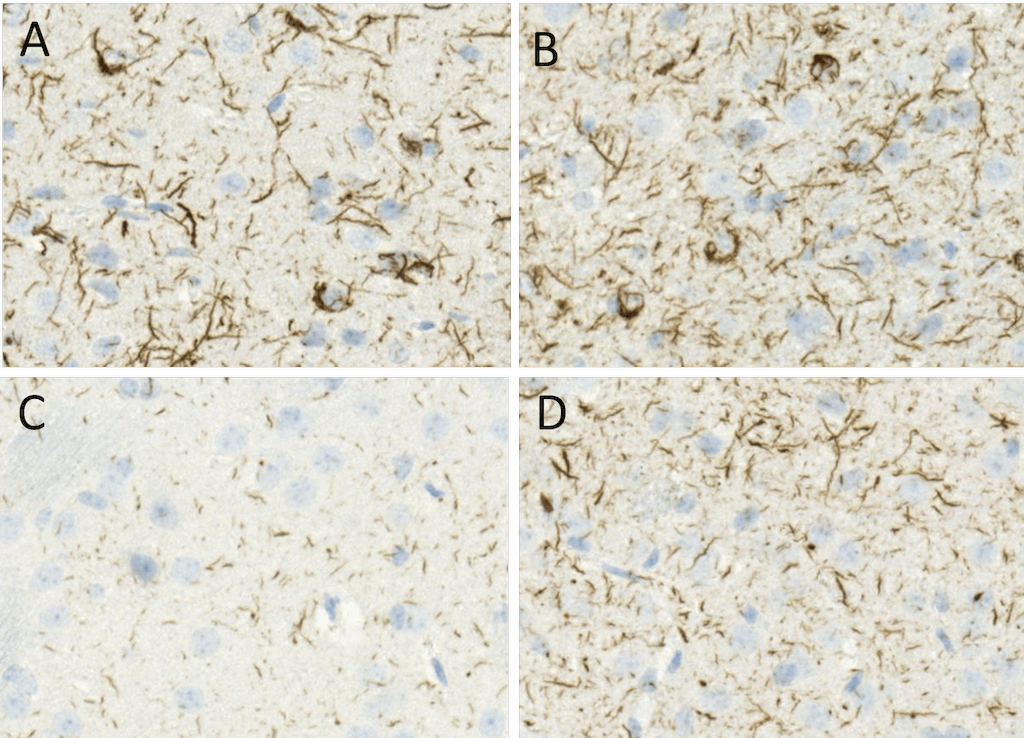
C57/BL6 mice were injected with 5 ug sonicated mouse recombinant alpha synuclein PFFs (SPR-324) at 8 weeks of age. Mice were unilaterally injected in the dorsal striatum (bregma AP + 0.2 mm, L +/1 2.0 mm, V – 3.0 mm) and sacrificed 30 days post-injection. (A) contralateral cortex. (B) ipsilateral cortex. (C) contralateral striatum. (D) ipsilateral striatum. Primary antibody: Anti-Alpha Synuclein pSer129 (SMC-600) at 1:10 000. Secondary antibody: anti-rabbit HRP. Mice injected with PFF displayed alpha synuclein staining in the striatum and cortex and contralateral to the injection site. Courtesy of: Porsolt.

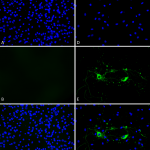
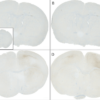
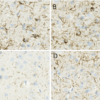
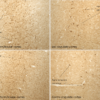
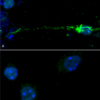
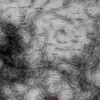
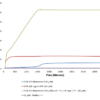
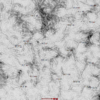
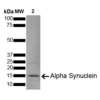



















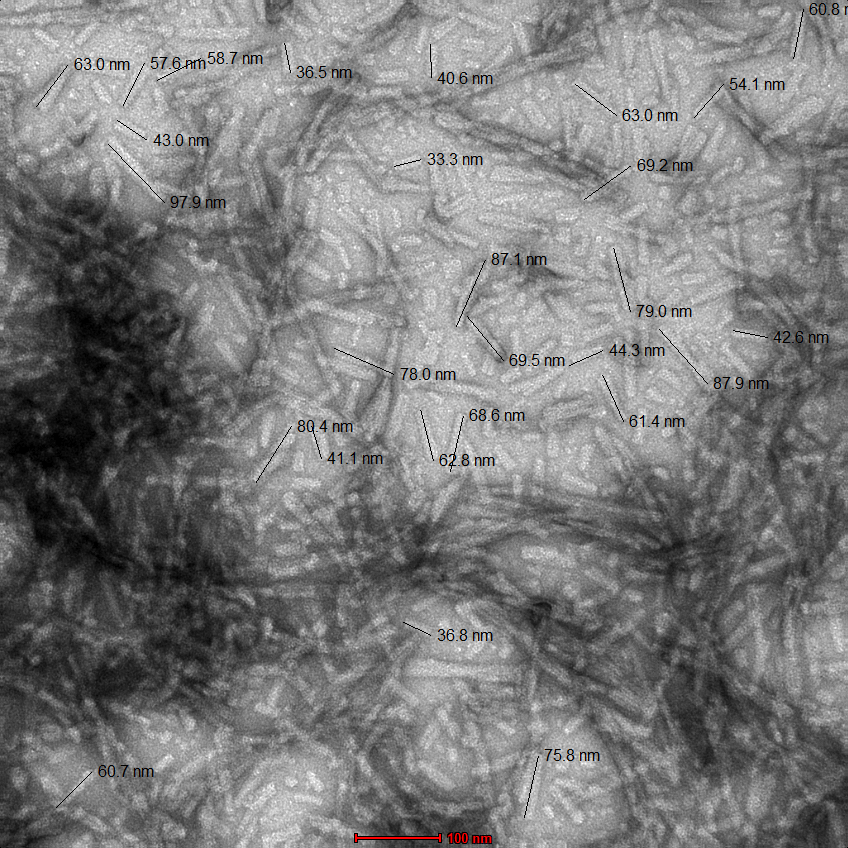
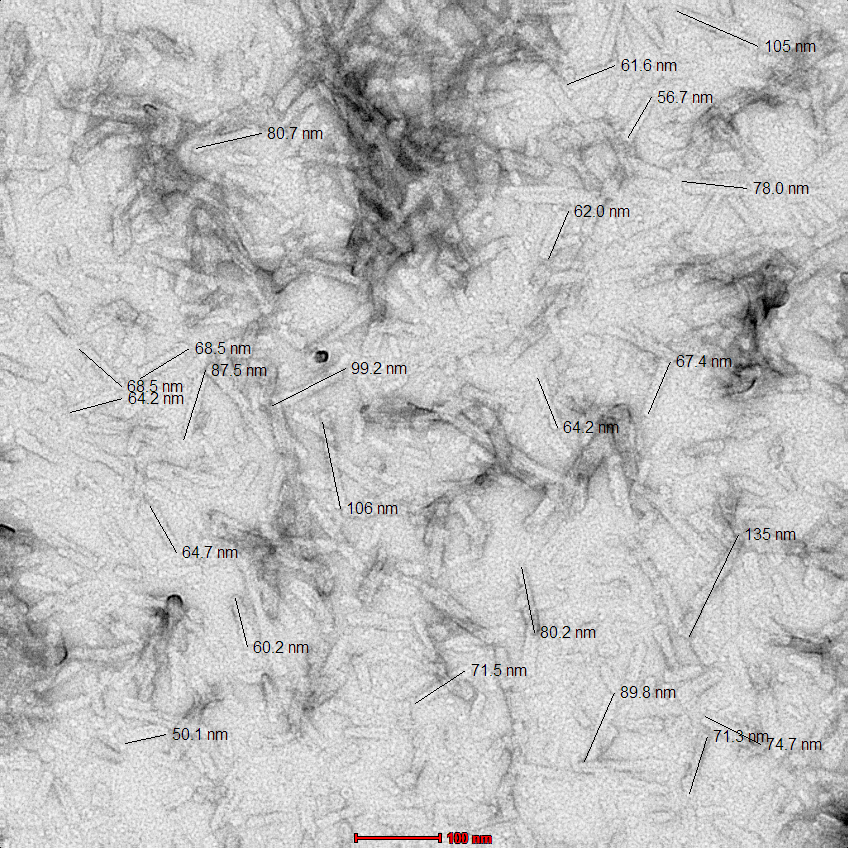
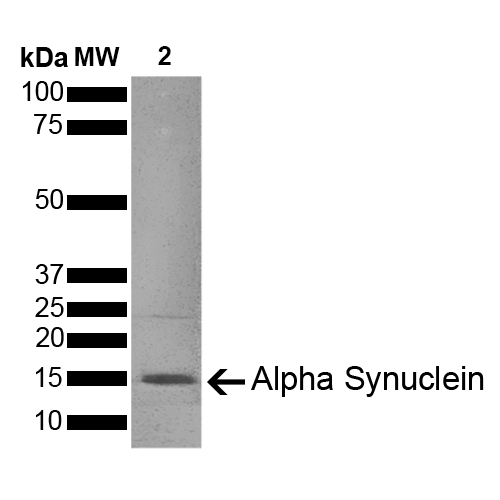
StressMarq Biosciences :
Based on validation through cited publications.